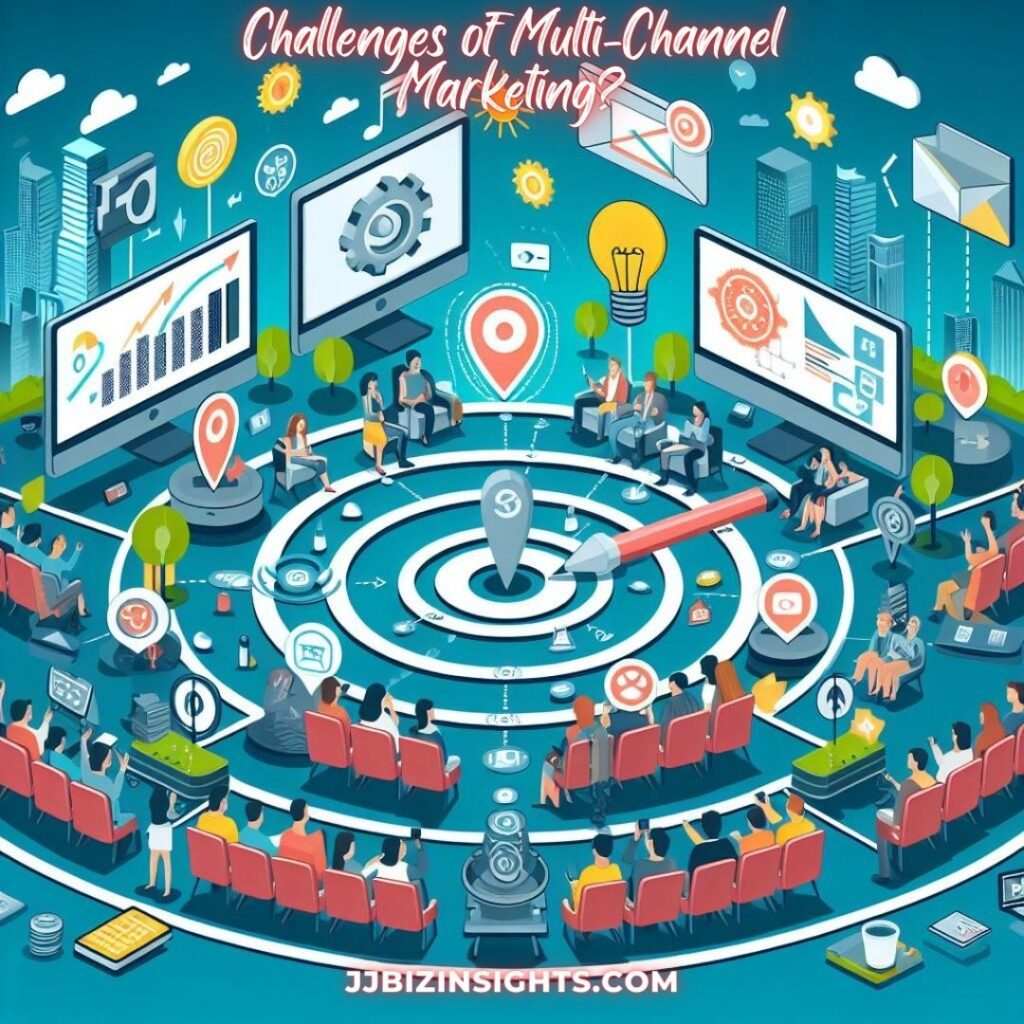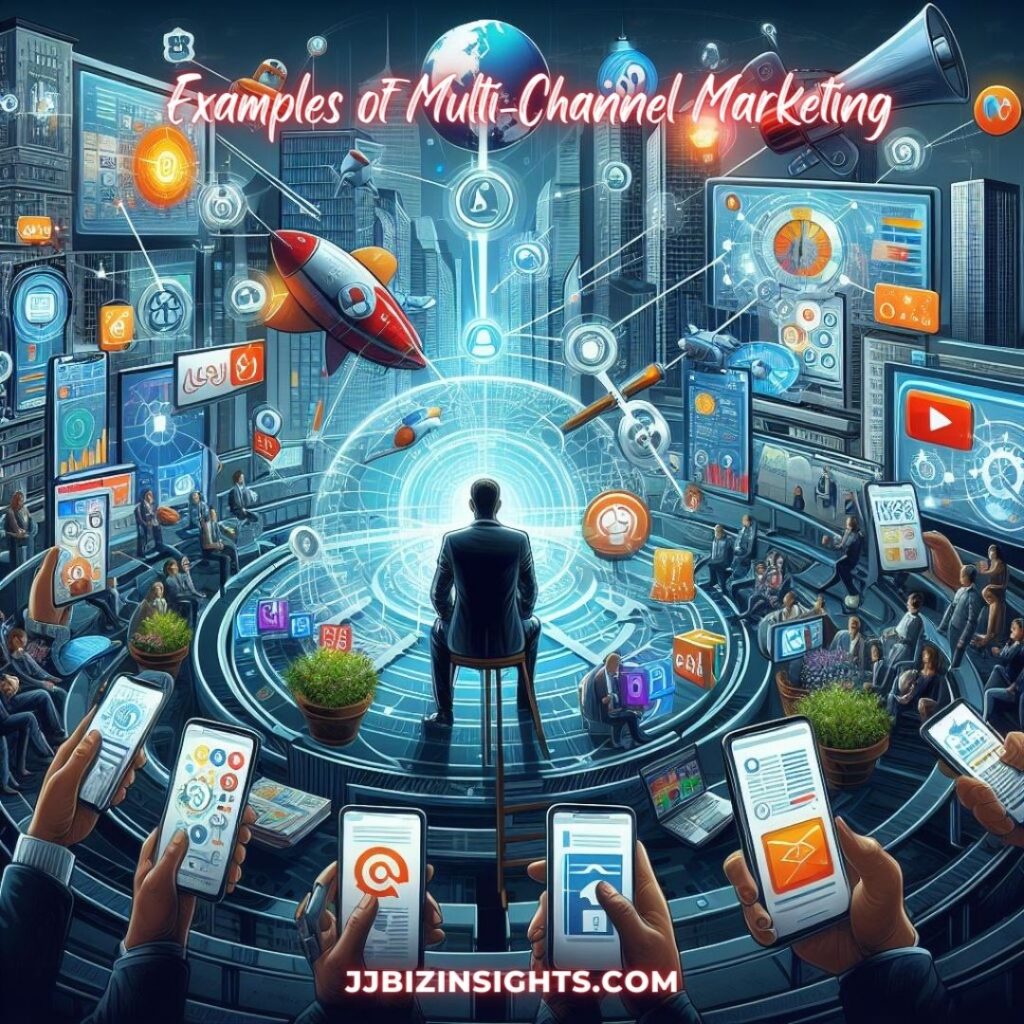
Multi-Channel Marketing: The Ultimate Roadmap to Audience Engagement
Multi-Channel Marketing: Embrace a winning multi-channel strategy and unlock explosive growth in today’s dynamic digital landscape!
Gone are the days of single-channel marketing dominance. In today’s digital age, customers expect consistent and engaging brand interactions across various touchpoints. This is where multi-channel marketing steps in, empowering businesses to reach a wider audience, foster deeper engagement, and ultimately achieve greater success.
But how do you master this multi-channel approach? Here’s a comprehensive guide to help you navigate the key steps:
1. Multi-Channel Marketing: Know Your Audience:
- Dive deep: Conduct market research, interviews, and focus groups to understand your target audience’s demographics, needs, online behavior, and preferred platforms. Uncover their pain points and motivations.
- Craft buyer personas: Develop detailed profiles of your ideal customers, including their age, income, occupation, and challenges. These personas will guide your content creation and channel selection.
- Learn from your existing audience: Analyze which channels your current customers frequent and what type of content resonates with them. Leverage these insights to inform your multi-channel strategy.
2. Multi-Channel Marketing: Explore and Evaluate Channels:
- Go beyond the surface: Research various channels like social media, email marketing, SEO, paid advertising, content marketing, influencer marketing, and website optimization.
- Assess strengths and weaknesses: Understand each channel’s reach, engagement potential, cost-effectiveness, and suitability for different content formats.
- Prioritize based on audience preferences: Focus on the platforms where your target audience spends their time and actively engages with content.
3. Multi-Channel Marketing: Build a Cohesive Strategy:
- Set SMART goals: Define clear and measurable objectives for your multi-channel marketing campaign, whether it’s brand awareness, lead generation, or driving conversions. Align these goals with your overall business objectives.
- Allocate resources wisely: Determine your budget and time allocation for each channel based on its potential impact and audience preferences.
- Speak with one voice: Develop consistent messaging with a unified brand voice across all channels. Ensure your messaging resonates with your target audience.
Remember, multi-channel marketing is an ongoing journey. Continuously monitor your results, adapt your strategy based on insights, and stay agile to respond to evolving customer behavior and industry trends. By following these steps and embracing a multi-channel approach, you can conquer the customer journey and unlock remarkable growth for your brand in 2024 and beyond!
Benefits of Multi-Channel Marketing?

Let’s explore the benefits of multi-channel marketing, which can significantly enhance your business’s reach and impact:
1. Wider Audience Reach:
By implementing a multi-channel strategy, you can connect with a broader audience. Your customers are not confined to a single channel; they engage with various platforms daily. Being present across multiple channels ensures you reach diverse customer segments that you might otherwise miss.
2. Brand Awareness and Equity:
Consistent brand presence across different channels reinforces brand recall and trust. When customers encounter your brand on social media, TV, email, or other platforms, it contributes to building brand equity. They are more likely to remember and choose your company.
3. Improved Customer Relationships:
Multi-channel marketing allows you to interact with prospects and customers across various touchpoints. Whether it’s social media, email, or in-store experiences, each interaction contributes to relationship-building. Stronger relationships lead to customer loyalty and repeat business.
4. Higher Conversion Rates and ROI:
Studies have shown that businesses using a multi-channel approach achieve better results than those relying solely on a single channel. By strategically combining channels, you can optimize conversion rates and maximize return on investment (ROI).
5. Tailored Messaging for Segments:
Different customer segments have varying preferences and behaviors. With multi-channel marketing, you can tailor messages to specific groups. For instance, TV advertising may target a broad audience, while social media engages with specific demographics.
6. Adaptability and Agility:
Remember, successful multi-channel marketing requires thoughtful planning, resource allocation, and continuous monitoring. Choose the channels that align with your business goals and resonate with your audience. 🚀🔗
Challenges of Multi-Channel Marketing?

Let’s explore the challenges of multi-channel marketing:
- Targeted Messaging:
- With an abundance of channels and choices facing customers, simply delivering a message isn’t enough. Effective multi-channel marketing requires tailored messaging that considers:
- Demographics: Understand your audience’s characteristics.
- Behavioral History: Consider past interactions and preferences.
- Transactional History: Account for purchase behavior.
- Preferred Channels: Deliver messages where your audience is most receptive.
- With an abundance of channels and choices facing customers, simply delivering a message isn’t enough. Effective multi-channel marketing requires tailored messaging that considers:
- Channel Coordination and Consistency:
- Managing multiple channels can be complex. Ensuring consistent branding, messaging, and timing across platforms is challenging. Lack of coordination may confuse customers or dilute your brand identity.
- Resource Allocation:
- Allocating resources (budget, time, personnel) to various channels can be tricky. Deciding where to invest for maximum impact while maintaining a cohesive strategy requires careful planning.
- Data Integration and Analysis:
- Collecting and integrating data from different channels is essential. However, merging data from disparate sources can be cumbersome. Analyzing this combined data to gain actionable insights is another hurdle.
- Customer Journey Mapping:
- Understanding how customers move across channels during their journey is crucial. Mapping touchpoints, identifying gaps, and optimizing the experience can be complex but is essential for success.
- Channel-Specific Optimization:
- Each channel has unique requirements. Optimizing content, timing, and engagement strategies for each platform demands expertise and ongoing adjustments.
Remember, overcoming these challenges involves strategic planning, continuous monitoring, and adaptability. A well-executed multi-channel approach can yield significant benefits for your marketing efforts. 🚀🔗
Dive into Multi-Channel Marketing Success Stories:

Here’s a deeper look at how leading brands masterfully engage audiences across various platforms:
1. TestGorilla: This recruitment assessment platform leverages a synergistic multi-channel approach:
- Social media: They post engaging content (e.g., career tips, industry insights) to attract potential clients and build brand awareness.
- Email marketing: Targeted email campaigns nurture leads with valuable resources (e.g., free assessments, webinars) and convert them into paying customers.
- PPC advertising: Strategic paid ads on relevant platforms (e.g., LinkedIn, search engines) reach a wider audience actively searching for solutions like theirs.
2. Coors Light: This beer brand celebrated their new can design launch through a multifaceted campaign:
- Social media: They hosted engaging contests on platforms like Facebook and Instagram, offering summer gear as prizes to generate excitement and encourage user-generated content.
- Contests: These interactive elements drove user engagement and brand recall, associating the new can design with a positive experience.
3. Starbucks: This coffee giant seamlessly blends physical and digital experiences:
- Mobile app: Customers can order ahead, pay conveniently, and earn rewards, creating a personalized and frictionless experience.
- In-store: The app integrates seamlessly with in-store purchases, eliminating wait times and fostering brand loyalty through convenience.
4. Allbirds: This sustainable footwear brand utilizes a comprehensive omnichannel strategy:
- Online store: Their user-friendly website showcases their product range and allows for easy online purchases.
- Physical stores: Brick-and-mortar locations provide customers with the opportunity to try on shoes, enhancing brand trust and offering a human touch.
- Social media: Platforms like Instagram serve as a window to their brand story, showcasing product features, connecting with their community, and encouraging user engagement.
5. Apple: This tech giant maintains a consistent brand experience across all touchpoints:
- Retail stores: Apple Stores offer hands-on product experiences and personalized customer service, solidifying their brand image.
- Online store: Their website provides a seamless and intuitive shopping experience, mirroring the in-store experience.
- Advertising: Their ads consistently reinforce their brand identity and product features, maintaining brand recognition and strengthening customer perception.
6. ASOS: This global fashion retailer caters to their audience with a multi-pronged approach:
- Website: Their website offers a user-friendly platform for browsing and purchasing, providing high-quality product images and detailed descriptions.
- Mobile app: The ASOS app allows for convenient on-the-go shopping, product discovery, and easy checkout processes.
- Social media: They actively engage with their audience on platforms like Instagram and TikTok, showcasing trends, offering styling tips, and fostering interaction through social media campaigns.
7. Under Armour: This sportswear brand personalizes communication to create deeper customer connections:
- Email: They leverage user data and purchase history to send targeted emails with personalized recommendations and relevant offers.
- App notifications: Under Armour’s app delivers timely notifications about product launches, exclusive deals, and personalized workout challenges, keeping users engaged and informed.
- Social media: They engage with followers through targeted content promoting specific products or campaigns, tailoring their message based on audience interests and demographics.
Remember, multi-channel marketing is about meeting your audience where they are and building a cohesive experience across channels. Tailor your strategy to your unique goals and audience preferences for success. 🚀🔗
Measuring the success of my Multi-Channel Strategy?
Measuring the success of your multi-channel strategy involves tracking various metrics across different channels. Here are key steps and metrics to consider:
- Define Clear Objectives:
- Start by setting specific goals for your multi-channel strategy. What do you want to achieve? Examples include increasing brand awareness, driving sales, or improving customer engagement.
- Action Metrics:
- These metrics directly tie to business outcomes. Examples include:
- Click-Through Rate (CTR): Measure clicks on links leading to conversions (e.g., purchases).
- Conversion Rate: Track the percentage of visitors who take a desired action (e.g., sign up, make a purchase).
- Sales Revenue: Quantify revenue generated through specific channels.
- These metrics directly tie to business outcomes. Examples include:
- Engagement Metrics:
- Engagement indicates interest and brand affinity. Consider:
- Social Media Metrics: Likes, shares, comments, and follower growth.
- Email Metrics: Open rates, click rates, and time spent reading emails.
- Video Completion Percentage: For video content.
- Engagement indicates interest and brand affinity. Consider:
- Perception Metrics:
- These indirectly measure impact:
- Brand Sentiment: Use social listening tools to gauge sentiment around your brand.
- Surveys: Collect feedback from customers to understand their perception.
- These indirectly measure impact:
- Attribution Models:
- Determine how credit is assigned to different touchpoints in the customer journey. Common models include:
- First-Touch Attribution: Credits the first interaction.
- Last-Touch Attribution: Credits the last interaction before conversion.
- Multi-Touch Attribution: Considers all touchpoints.
- Determine how credit is assigned to different touchpoints in the customer journey. Common models include:
- Cross-Channel Analysis:
- Compare performance across channels:
- Channel Contribution: Assess which channels drive the most conversions.
- Cross-Channel Lift: Measure the impact of using multiple channels together.
- Compare performance across channels:
- Customer Lifetime Value (CLV):
- Understand the long-term value of customers acquired through different channels.
- Calculate CLV based on repeat purchases, referrals, and loyalty.
- A/B Testing:
- Test variations of your multi-channel campaigns to identify what works best.
- Compare metrics (e.g., conversion rates, engagement) between different versions.
- Marketing Automation Platforms:
- Use tools that consolidate data from various channels.
- Analyze performance and optimize campaigns based on insights.
- Regular Reporting and Iteration:
- Create dashboards to track metrics over time.
- Continuously refine your strategy based on data-driven insights.
Remember that success metrics may vary based on your specific business goals and industry. Regularly review and adapt your multi-channel approach to maximize its impact. 🚀🔗
Sources:
- Gartner: How to Properly Measure Multichannel Marketing Campaigns
- Madison Logic: How to Measure and Optimize Your Campaigns Toward Success
- Smart Insights: Multichannel marketing strategy and planning [free digital template]
The 5 Biggest Marketing Mistakes to Avoid





